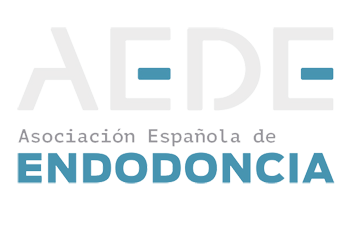Vol. 33 - Nº 2
Análisis comparativo in vitro de la capacidad de sellado marginal en cavidades a retro del MTA y del cemento de óxido de cinc-eugenol reforzado
Por: Álvaro Zubizarreta Macho, Cristina Rico Romano, Ana Belén Lobo Galindo, Alberto Ferreiroa Navarro, Luis Óscar Alonso Ezpeleta, Jesús Mena Álvarez
Resumen del artículo:
RESUMEN
Objetivo: El objetivo de este estudio consiste en comparar la capacidad de sellado apical de dos materiales empleados en la obturación de cavidades aretro en cirugía periapical: MTA y un cemento de óxido de cinc-eugenol reforzado (Super EBA®).Material y métodos: Se llevó a cabo un estudio in vitro con dientes unirradiculares extraídos, a fin de evaluar la capacidad de sellado apical de dosmateriales empleados como material de obturación en cavidades a retro: cemento de óxido de cinc reforzado (Súper EBA®) (n = 30) y MTA (n = 30).Además, se creó un grupo control negativo (n = 5) y otro positivo (n = 5). Las muestras procesadas fueron sumergidas en tinta China y posteriormentediafanizadas. Tras secar las muestras, se cuantificó el grado de filtración (mm) mediante un software de análisis de imagen. Los resultados fueron analizadosutilizando el test de la t de Student, empleando el programa SPSS versión 20.0. Un valor de p ≤ 0,05 fue considerado significativo.Resultados: El 6,6% y el 10% de las muestras obturadas con MTA o con Súper EBA®, respectivamente, sufrieron una filtración completa. Estas referenciasrevelaron que el grado de filtración no depende del material empleado (p = 0,133).Conclusión: No existen diferencias respecto al grado de filtración entre ambos materiales empleados en el sellado retrocavitario.
PALABRAS CLAVE
Agregado trióxido mineral; Cirugía endodóncica; Microfiltración; Obturación a retro; Sellado apical; SuperEBA.
ABSTRACT
Objectives: The aim of this study was to compare the apical sealing capabilities of the mineral trioxide aggregate (MTA) and of the reinforced zinc oxide-eugenolcement Super EBA®.Material and methods. An in vitro study was carried out using extracted single-rooted teeth samples. Two materials were tested as root-end filling materials: areinforced zinc oxide-eugenol cement (Super EBA®) (n = 30) and mineral trioxide aggregate (MTA) (n = 30). Another two groups were created as negative (n = 5) andpositive (n = 5) control groups. The samples were put in Chinese ink and then diafanizated. Once dried, the level of leakage (mm) was measured by an image softwareprogram. The results were analysed using Student´s t-test, using the SPSS version 20.0. Differences with p value lower or equal 0.05 were considered significant.Results: Mean filtration in MTA group was 0.77 ± 1.006, whereas in the SuperEba group it was 1.20 ± 1.186 (p = 0.133). Complete leakage was found in 6.6%of the samples filled with MTA and in 10% of those filled with Super EBA® (p = 0.133). The level of leakage was not influenced by the material used and nullhypothesis can be accepted.Conclusion: Both type of root-end filling materials analysed in this research, are indicated for sealing the retropreparation, without differences in the leakage.
KEY WORDS
Apical Sealing; Endodontic surgery; Microleakage; Mineral trioxide aggregate; Root-end filling material; Super EBA.






